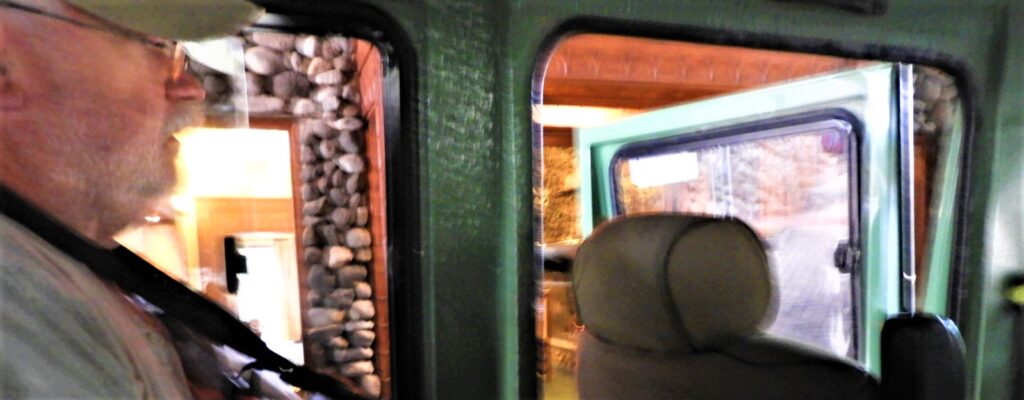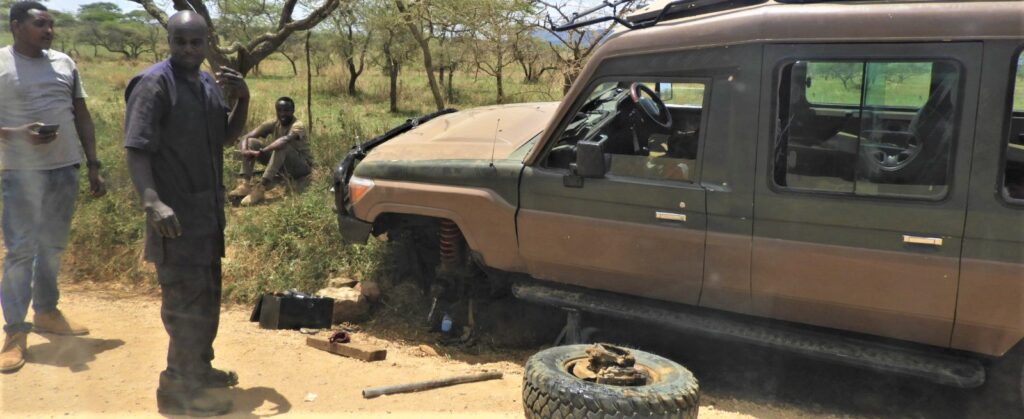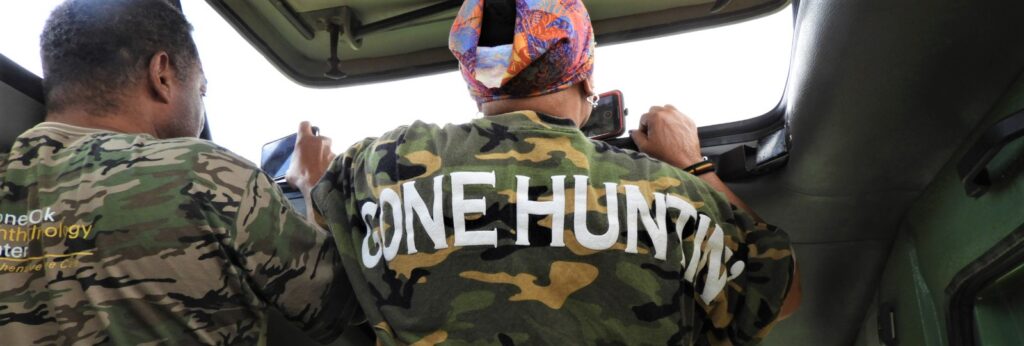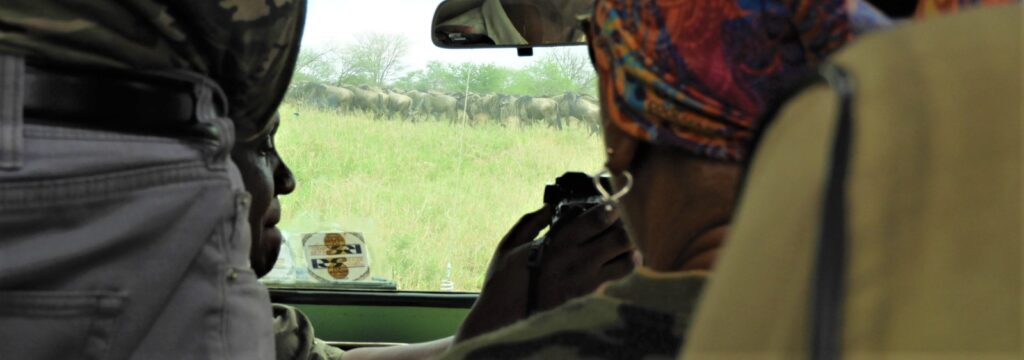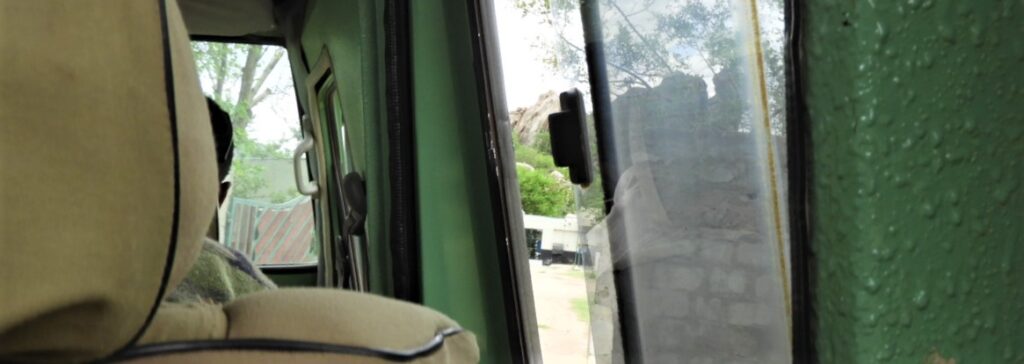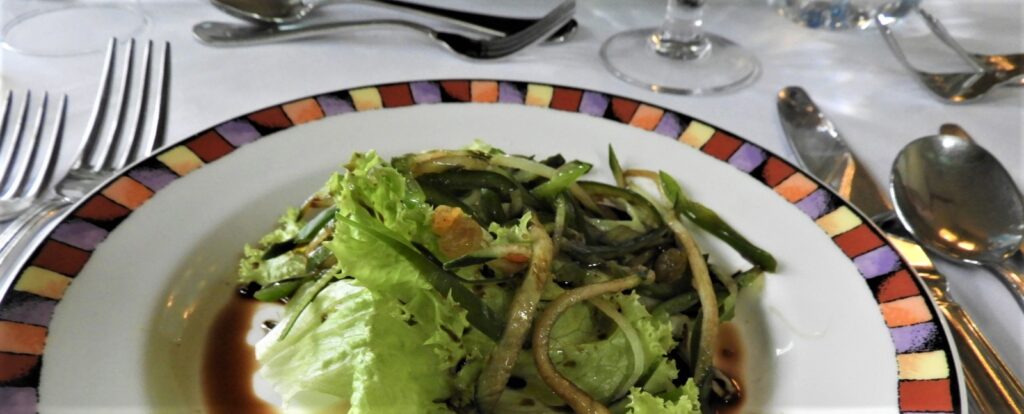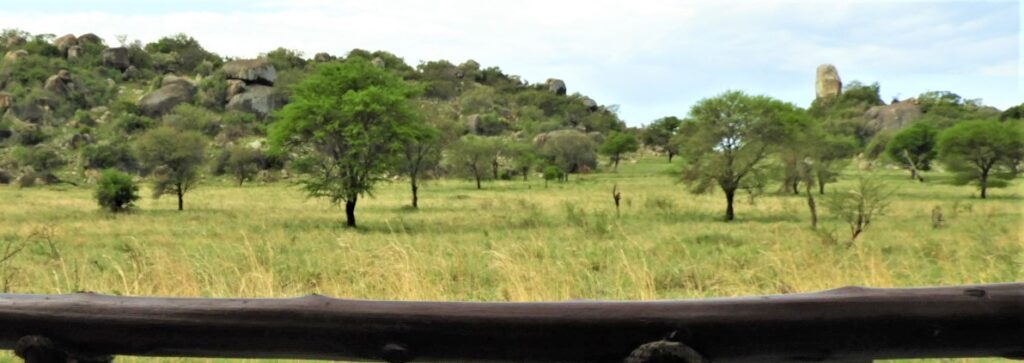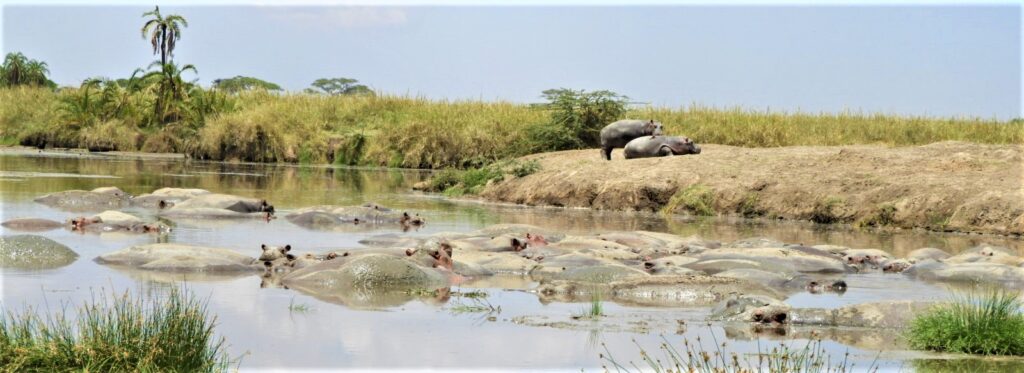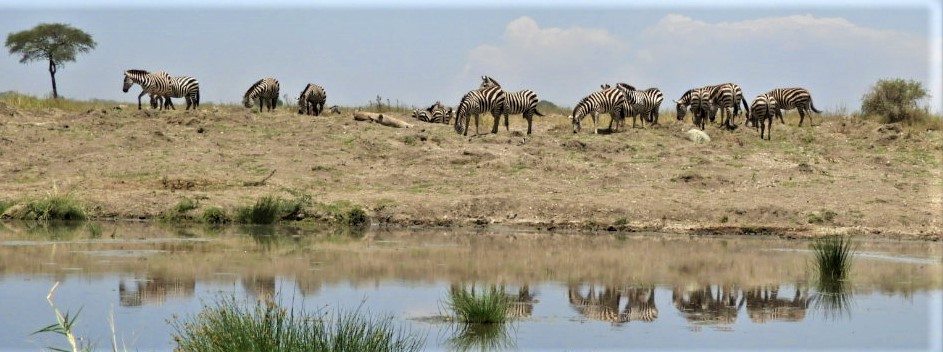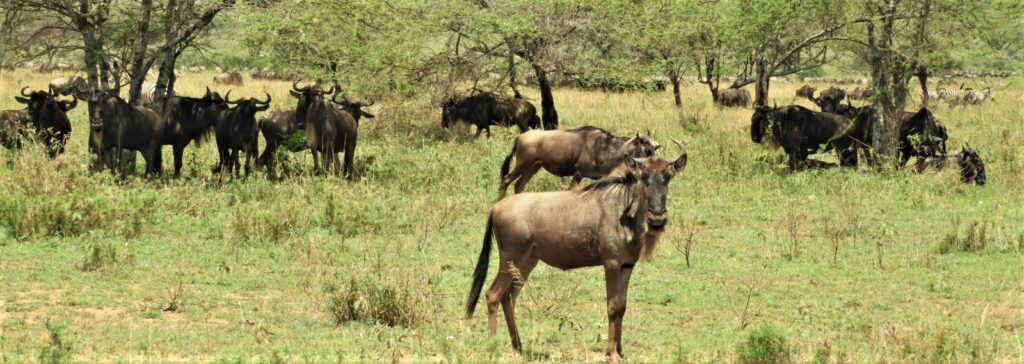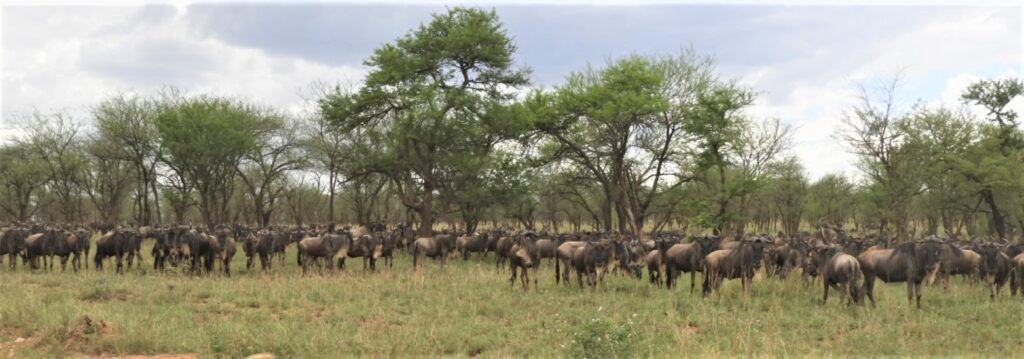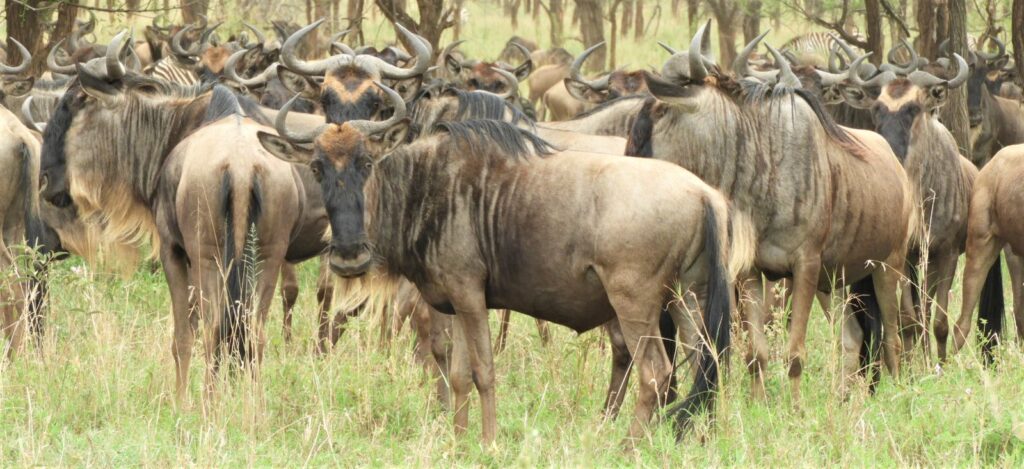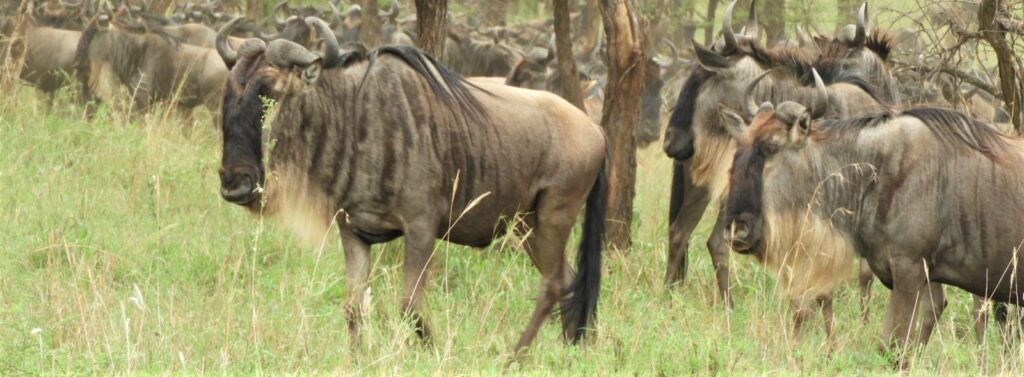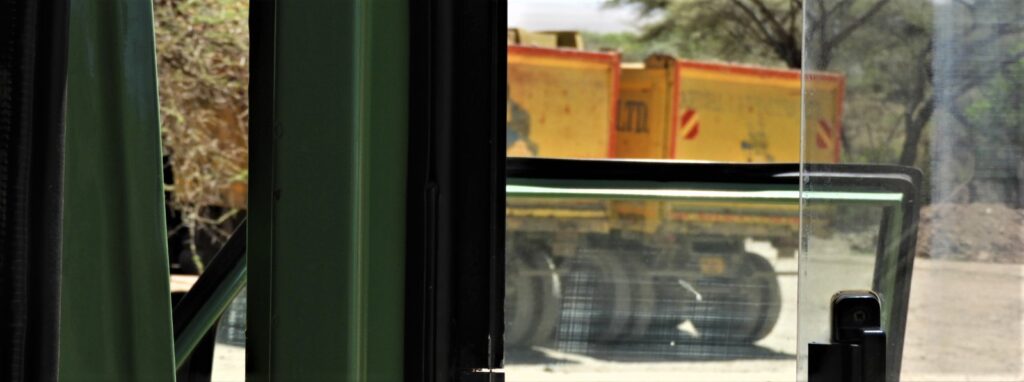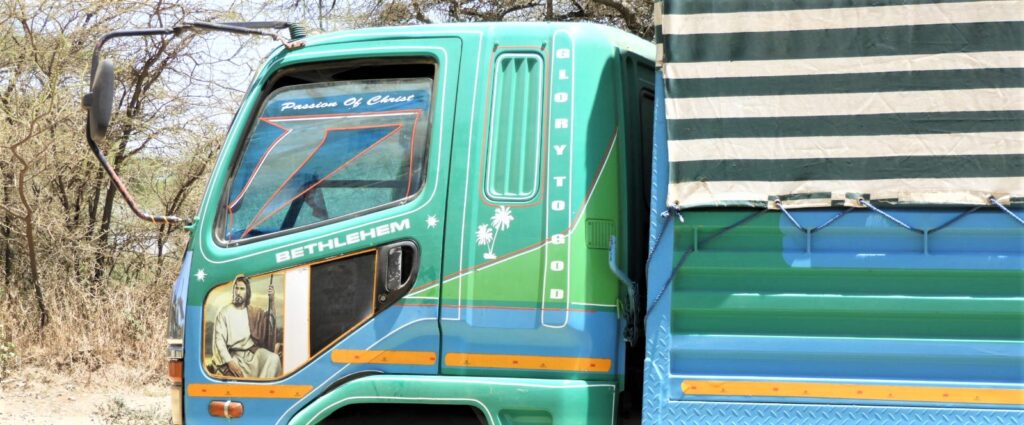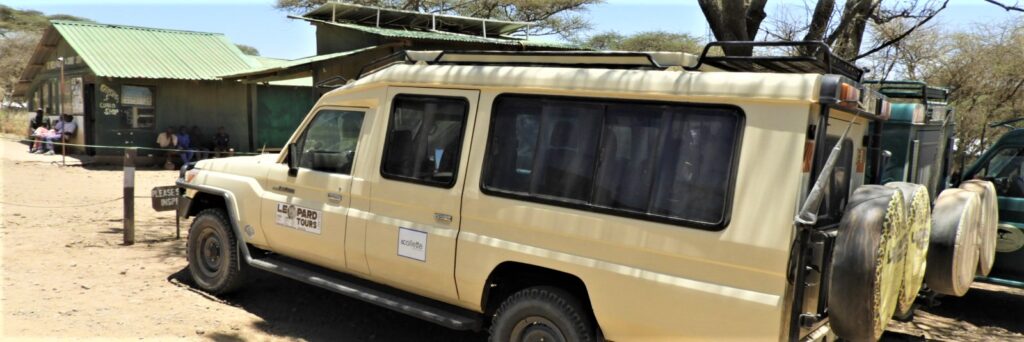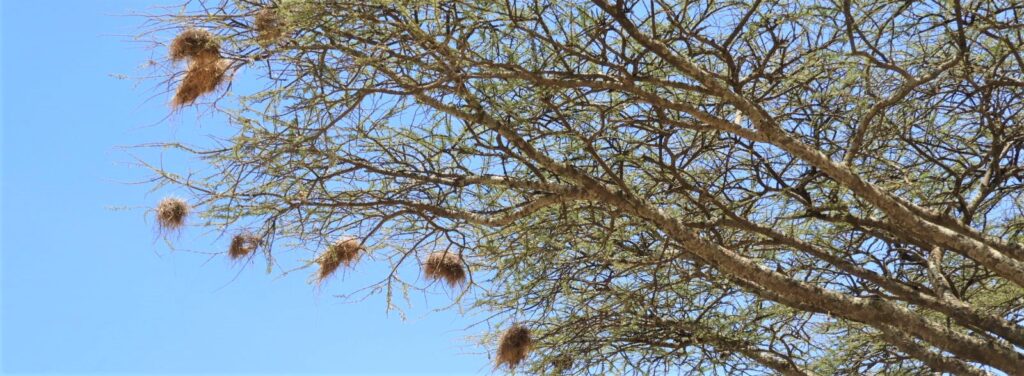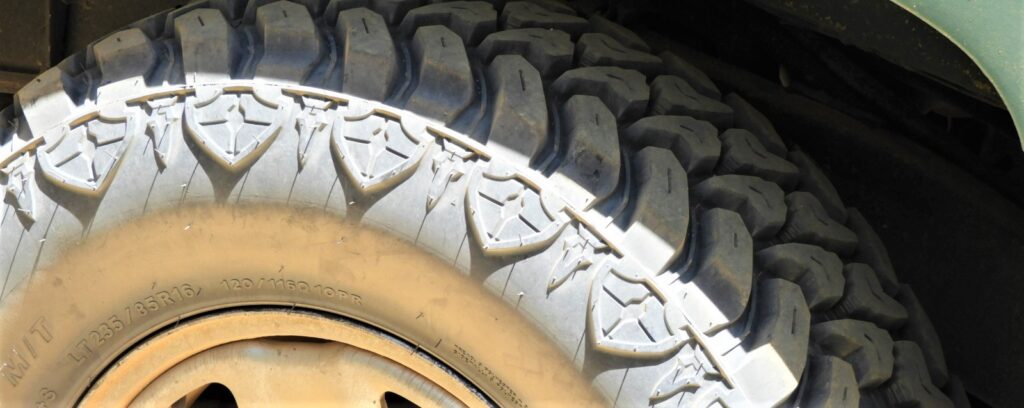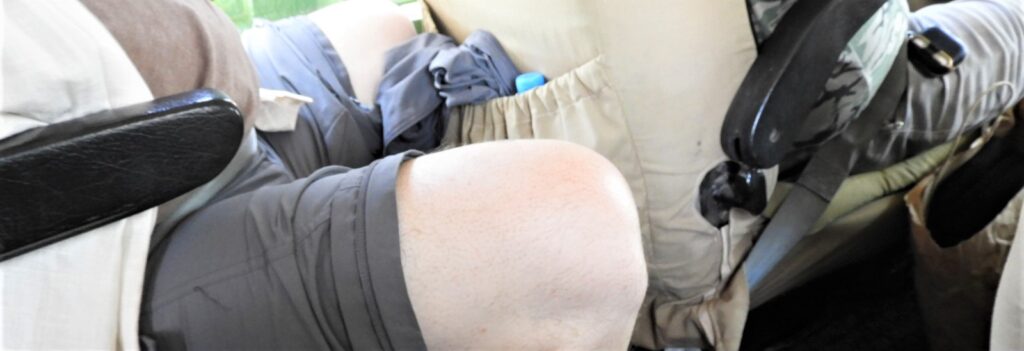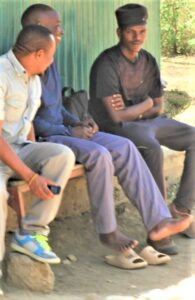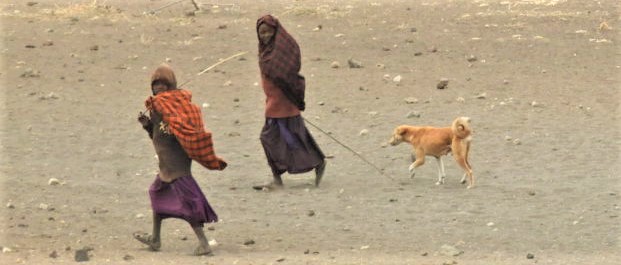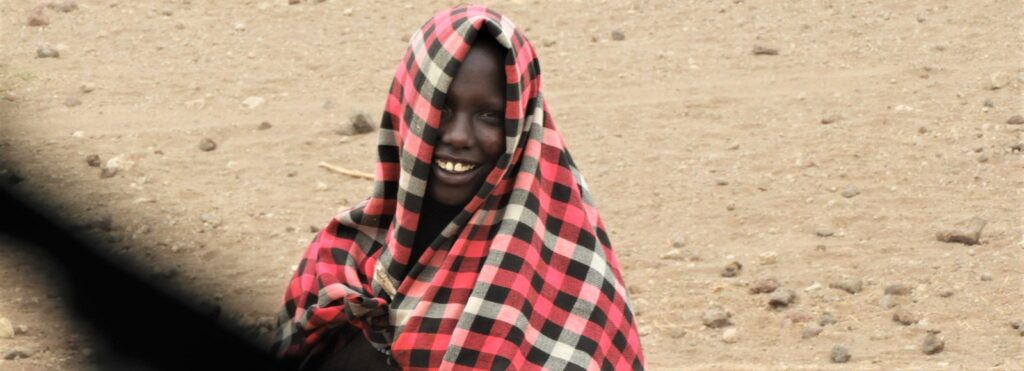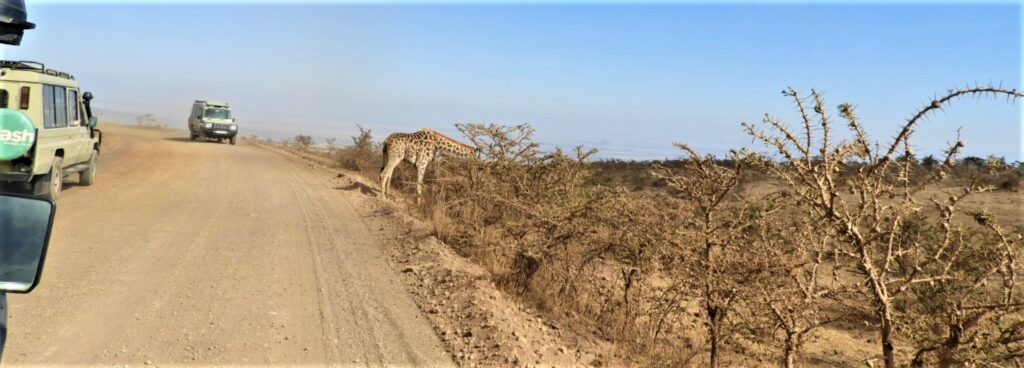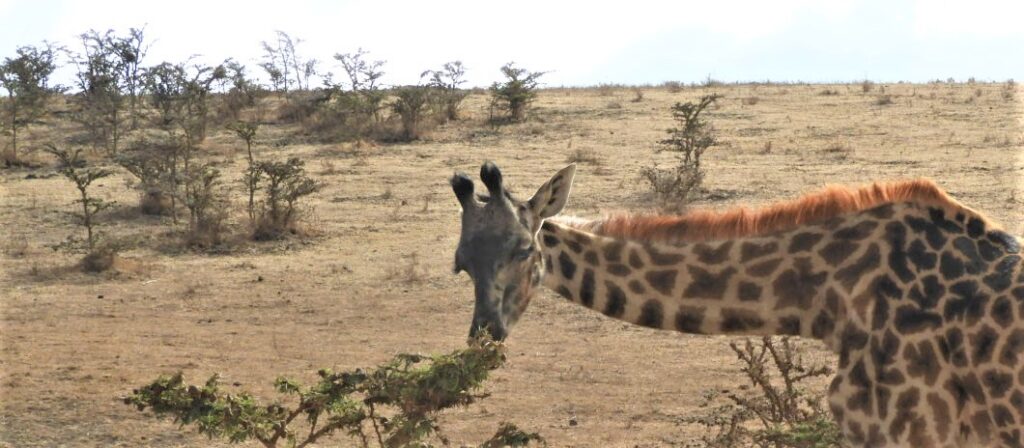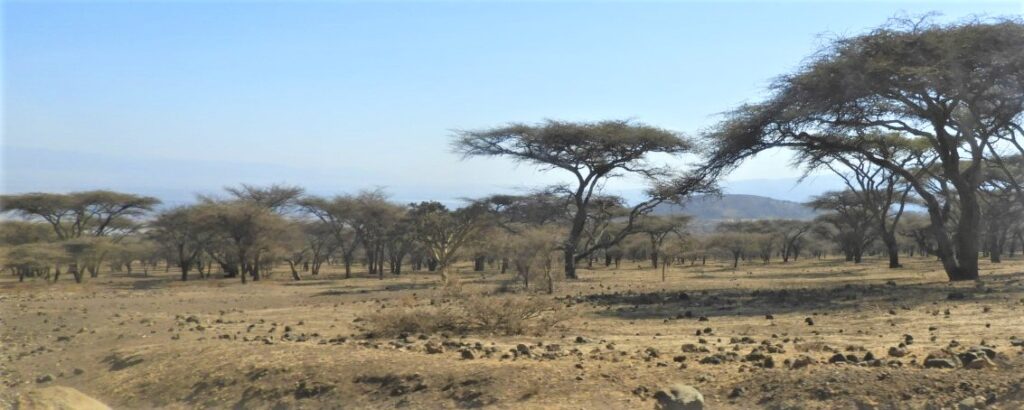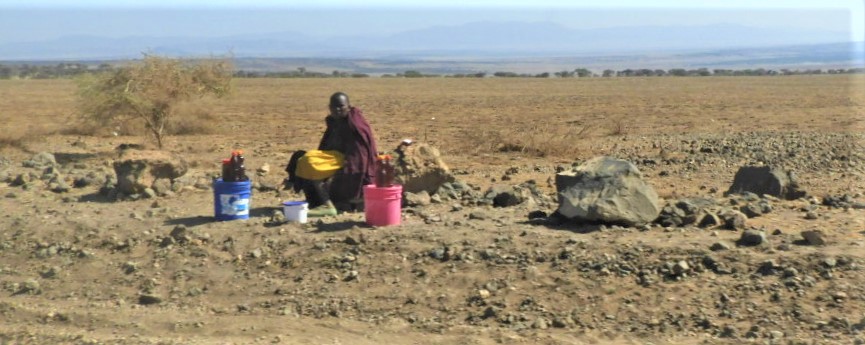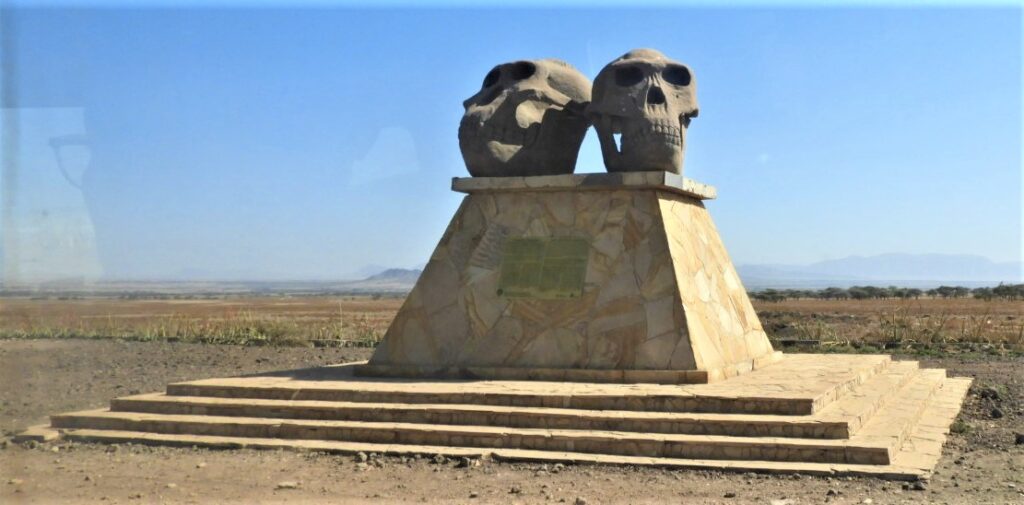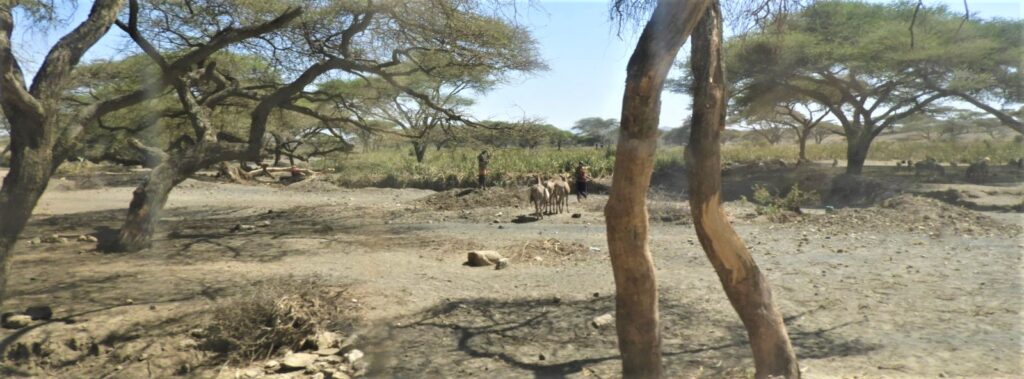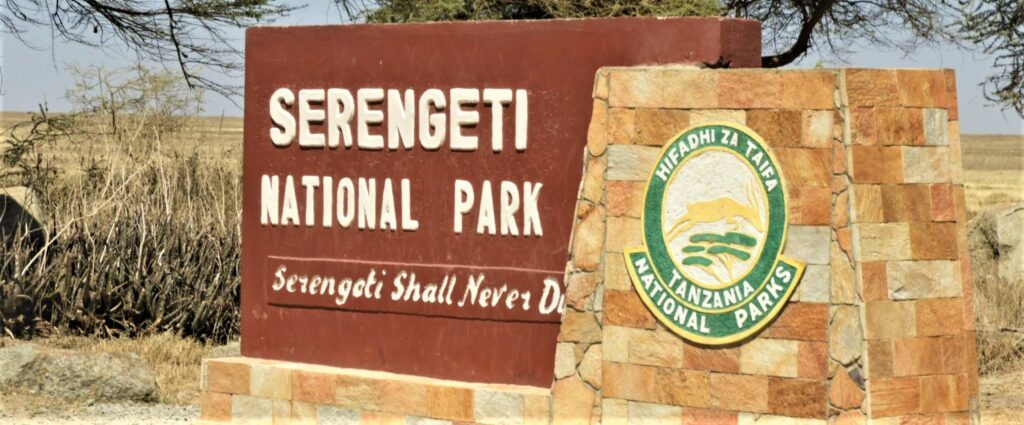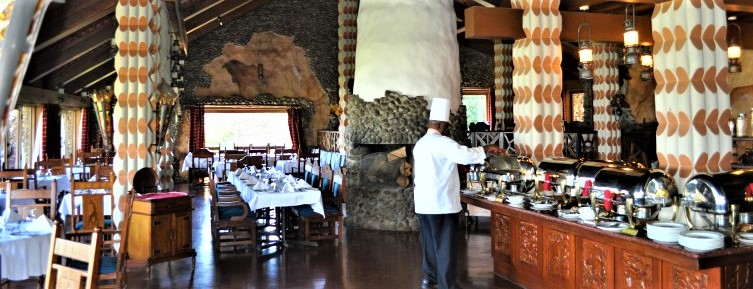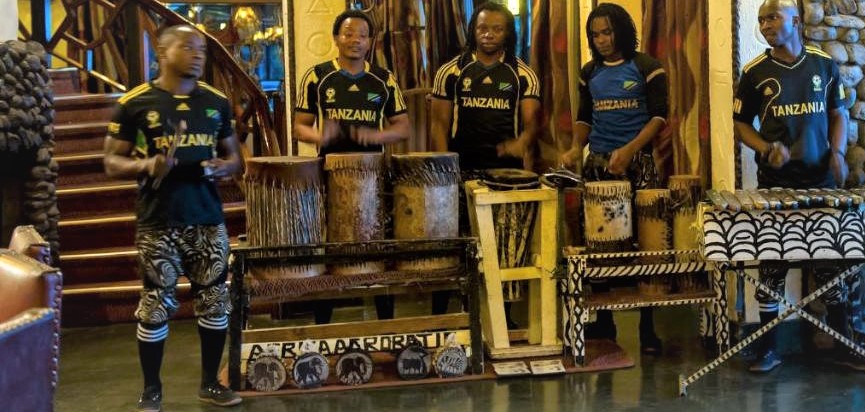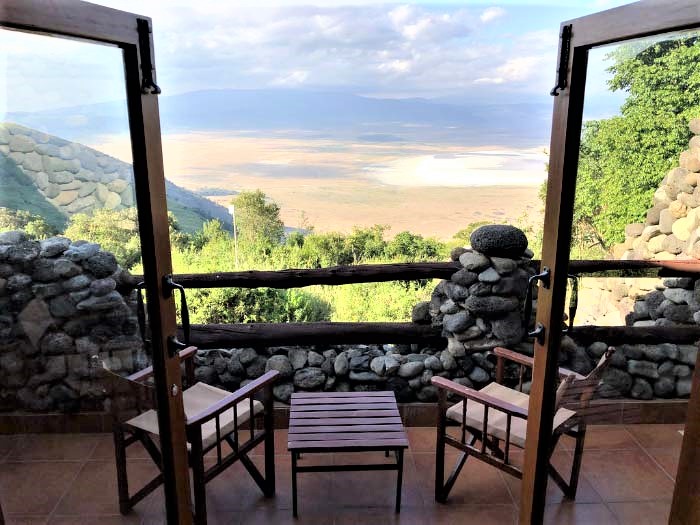Archive for September 22nd, 2022
» posted on Thursday, September 22nd, 2022 by Linda Lou Burton
Tea And Slippers
Linda Lou Burton posting from Mbuzi Mawe Serena Tented Camp, Serengeti National Park, Tanzania– This time, a photo first! I stopped at the door (flap) of our tent for a picture before I even stepped inside. I wanted to remember what it looked like before we mucked it up with all our stuff. This was our third tent camp – remember Sweetwaters on the Ol Pejeta, overlooking the Water Hole? And Sarova in the Maasai Mara, with the monkey on the porch that overlooked a creek? I dearly loved both; for all the pretense of being a “rugged safari camp” while providing 24-hour room service, 24-hour hot water in a luxury shower, permanent rooftops and floors, they still managed to create a sense of wilderness privacy with a real-life soundtrack of the animal world. The tea and slippers? A touch of home.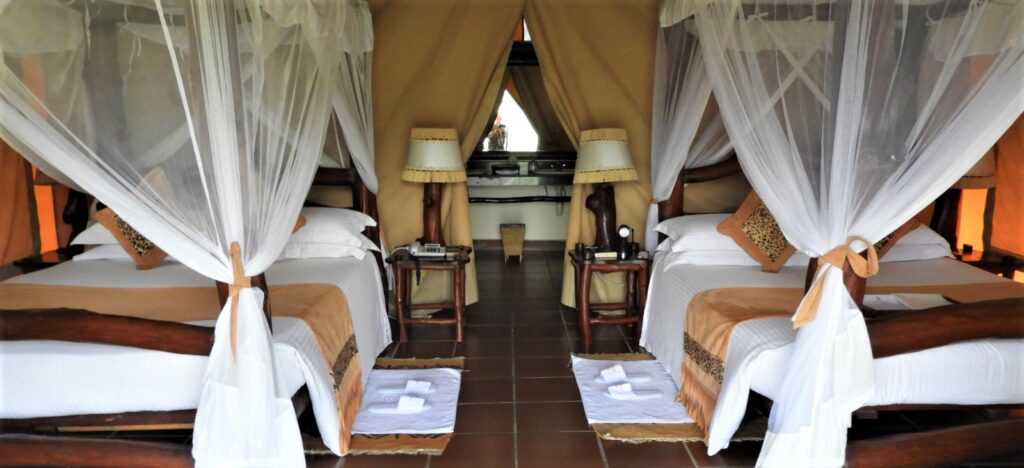
It was 4 PM when we reached our tent; our day began before dawn. Packing, luggage out, breakfast, checking out. An hour for the traffic jam, an hour for the wildebeest watch. A few brief stops for quickie animal shots or random things such as paperwork at the airstrip, and helping someone with a flat tire. Two hours late for lunch, we were rushed into the dining room on arrival (they wheelchaired me in through the staff’s quarters where the only sidewalk exists). And so we ate, ordering from a menu no less, a menu encased in leather; courses served, slowly and politely. Finally, our tent! The rest of the gang was hurrying, yep, get back in the 4x4s for a game drive before dark! Basically everything I’d seen so far today was from third row back in a 4×4. People! Crowded! Blocked views! Blurry photos! The rest of my day was an easy choice to make: tea and slippers, on my porch. See my unhindered view of the kopjes across my grassy yard? See the little hyrax, asleep on the other side of the rail? Now, there’s an idea, I’m thinking. I have a giant lounge chair to stretch out on for a nap of my own. Why would anyone be anywhere else in the world? Progressions of the day below.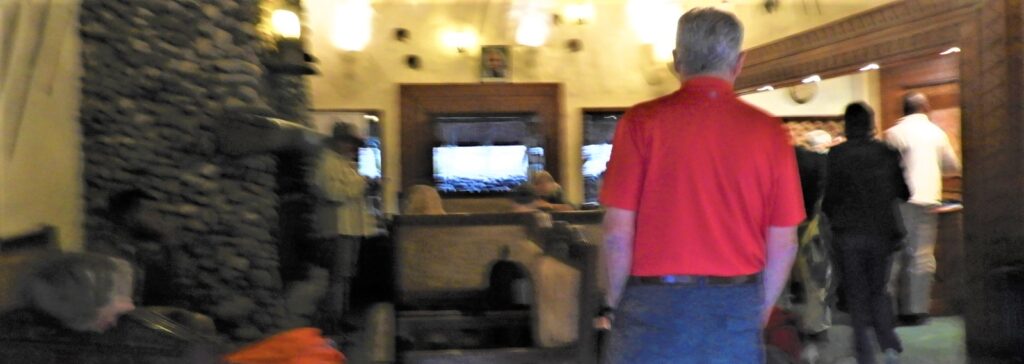
The scoop on the rock hyrax, which lives on the rock outcroppings all around our camp. They resemble pikas, or marmots, but design-wise, are more closely related to elephants!
- They are furry and rotund, with short tails.
- They weigh 5-10 pounds and are 12-28 inches long.
- Their tusks develop from incisor teeth as do the tusks of elephants; most mammalian tusks develop from the canines.
- Their nails are flat, as they are on elephants, rather than curved and elongated as on most mammals.
- There are several complex body arrangements regarding reproduction that are similar in hyraxes, elephants, and manatees (sea cows).
We were advised to keep the tent flap zipped at all times, as the little fellows are very curious by nature!
Mbuzi Mawe Serena Tented Camp https://www.serenahotels.com/mbuzi-mawe
Serengeti National Park https://www.serengeti.com/
Next Post: There’s An Elephant In My Yard
» posted on Thursday, September 22nd, 2022 by Linda Lou Burton
Animals, Yes
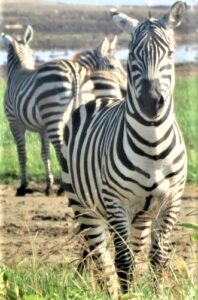 Linda Lou Burton posting from Mbuzi Mawe Serena Tented Camp, Serengeti National Park, Tanzania– Believe it or not! We actually spotted animals today once we really got going. Lots of them, in fact. Yes, we saw lions (sleeping). Yes, we saw hippos (sleeping). And boy oh boy did we see wildebeests (definitely NOT sleeping), the number of which surprised even our guide. The day began with pretty giraffes, closeup; giraffes have been on my Top 5 List since that day in Nairobi when I fed them, face to face. They are so graceful, and easy-going. Zebras are also on my Top 5. Have you noticed in photos – a zebra looks good from any angle. Their faces are nicely proportioned; turn them around and their rumps are too! Their tails cover what tails do not cover on baboons (ach!) and are nicely braided at the tip. And a side view of a zebra is pleasant to look at too; a nice black and white stripe;
Linda Lou Burton posting from Mbuzi Mawe Serena Tented Camp, Serengeti National Park, Tanzania– Believe it or not! We actually spotted animals today once we really got going. Lots of them, in fact. Yes, we saw lions (sleeping). Yes, we saw hippos (sleeping). And boy oh boy did we see wildebeests (definitely NOT sleeping), the number of which surprised even our guide. The day began with pretty giraffes, closeup; giraffes have been on my Top 5 List since that day in Nairobi when I fed them, face to face. They are so graceful, and easy-going. Zebras are also on my Top 5. Have you noticed in photos – a zebra looks good from any angle. Their faces are nicely proportioned; turn them around and their rumps are too! Their tails cover what tails do not cover on baboons (ach!) and are nicely braided at the tip. And a side view of a zebra is pleasant to look at too; a nice black and white stripe; 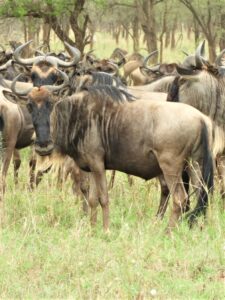 they’re always neatly dressed and easy to spot in a crowd. Now, here is your Animal Question of the Day: WHY, as we observed clearly this afternoon, do zebras and wildebeests hang out together? Wildebeests, aka gnus, are of the antelope family (I learned today) and though they may be good partners with zebras, share no resemblance whatsoever. Their manes and tails are dark and shaggy; they have broad muzzles, Roman noses, and curving horns. What makes them such good partners, especially during migration times?
they’re always neatly dressed and easy to spot in a crowd. Now, here is your Animal Question of the Day: WHY, as we observed clearly this afternoon, do zebras and wildebeests hang out together? Wildebeests, aka gnus, are of the antelope family (I learned today) and though they may be good partners with zebras, share no resemblance whatsoever. Their manes and tails are dark and shaggy; they have broad muzzles, Roman noses, and curving horns. What makes them such good partners, especially during migration times?
One simple reason, as they both go hunting for fresh grasslands: zebras love the taller grasses; wildebeest prefer short grasses. Like Jack Sprat and his wife, they are perfect partners when it comes to dinnertime. But there’s more: zebras have great eyesight and wildebeests have a good sense of smell. All helpful to each other for predator alerts (zebra eyesight) and finding water (wildebeest smell). Wildebeests also have “swarm intelligence” which means they are good at solving problems as a group. It was a thrill to watch this partnership in action today! The pictures below are NOT of the same wildebeests over and over; many were moving, over the period of an hour; watch for zebras in the crowd. Wow! as some might say. The sleeping lion was just as we entered the Park; the sleeping hippos were before we reached the wildebeests; the last animal I saw in this busy animal day was a hyrax, sleeping beside the porch of my tent. A hyrax looks much like a pika, or marmot, but guess what, boys and girls – it is more closely related to the elephant! And that is a story for the next post.
Serengeti National Park https://www.serengeti.com/
Mbuzi Mawe Serena Tented Camp https://www.serenahotels.com/mbuzi-mawe
Next Post: Tea and Slippers
» posted on Thursday, September 22nd, 2022 by Linda Lou Burton
Damn! That Traffic Jam
 Linda Lou Burton posting from Serengeti National Park, Tanzania– “Looking in my rear-view mirror I saw myself in the next car back.” My entertainment was observing what everybody else was doing, as I hummed a tune from way back in my James Taylor days. Damn! that traffic jam. This time it wasn’t Ben’s fault that we were running late. In fact, Ben, (at least he claims) is responsible for resolving the middle-of-nowhere traffic jam we found ourselves in at Checkpoint Serengeti. “I called the President’s Office!” he declared, face contorted in anger. “The President of Tanzania?” we asked, unbelieving. “You bet!” was his answer. “This is no way to promote tourism in Tanzania!” Ben paced back and forth between our two 4x4s, ranting a bit as he told his story.
Linda Lou Burton posting from Serengeti National Park, Tanzania– “Looking in my rear-view mirror I saw myself in the next car back.” My entertainment was observing what everybody else was doing, as I hummed a tune from way back in my James Taylor days. Damn! that traffic jam. This time it wasn’t Ben’s fault that we were running late. In fact, Ben, (at least he claims) is responsible for resolving the middle-of-nowhere traffic jam we found ourselves in at Checkpoint Serengeti. “I called the President’s Office!” he declared, face contorted in anger. “The President of Tanzania?” we asked, unbelieving. “You bet!” was his answer. “This is no way to promote tourism in Tanzania!” Ben paced back and forth between our two 4x4s, ranting a bit as he told his story.
There is no fence around the Serengeti, no guarded gate as at many national parks to monitor who goes in and out. But there is a checkpoint on the road, where every vehicle is stopped to pay fees and register. All this information is then fed into a computer. Today, however, the computer was DOWN. So, the “data collector” PIC (person in charge) simply disallowed entry any further into the Park! Trucks were backed up; buses were backed up; and worst of all (for the tourism industry) SAFARI vehicles were backed up! Ben (remember, he’s working on his Masters in Tourism) suggested, over and over to today’s PIC “Just write the information on PAPER! You can enter it into the computer LATER.” Said PIC was too scared to go against protocol UNTIL – Ben made his phone call to the President’s Office. Ben declared that the President himself made the phone call back that unplugged our traffic jam.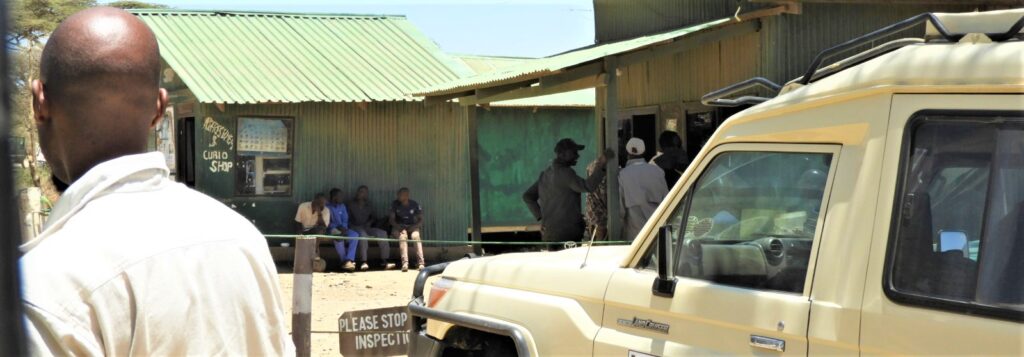
Following are photos I took from my seat in the 4×4 as I watched what people do in times like this. Some folks, I noted, just say “pole, pole,” an attitude it’s often useful to adopt. 
Serengeti National Park https://www.serengeti.com/
Mbuzi Mawe Serena Tented Camp https://www.serenahotels.com/mbuzi-mawe
Next Post: Animals, Yes
» posted on Thursday, September 22nd, 2022 by Linda Lou Burton
Famous Restrooms
Linda Lou Burton posting from Ngorongoro Conservation Area, Tanzania– I thought of Glenny today. A coworker from way back in the 80s, she made the funniest remark about vacation photos I’ve ever heard. This was the era of the Brownie-Camera-Kodak-Film mode of remembering, when you couldn’t afford to take 20 shots of the same rock. Nor did you know how a shot would turn out until weeks after you returned home, got your six rolls developed, and stuck your 34 decent photos in an album. Glenny’s remark was “We always forgot to take pictures until we got out of the car at a restroom. So we’d ‘family group’ in front of the restroom doors and smile. My albums are Famous Restrooms of the World.”
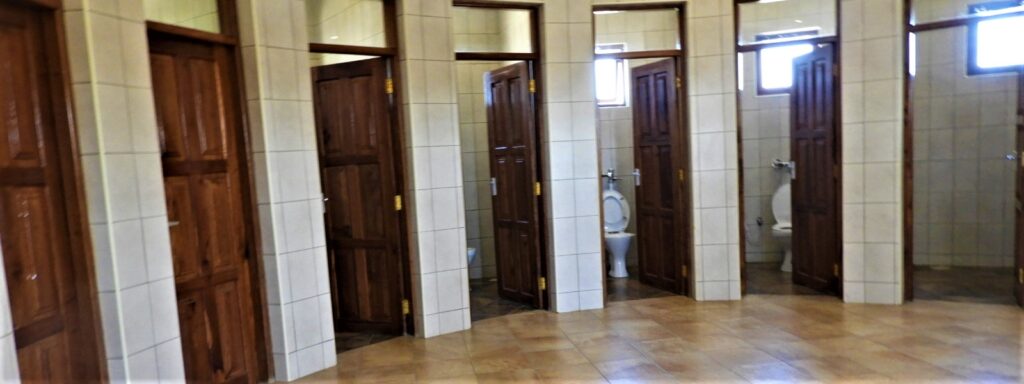
 My gangmates and I didn’t “group up” in front of restroom doors today, but we did take photos INSIDE a positively glamorous construction as we blathered on about IT (the restroom) without even having a clue as to WHERE we were. I suppose, having signed up for a “safari tour” that was designed to see as many wild animals in Africa as possible, it wouldn’t be part of the Guide Dialog to focus on archeological and/or cultural sites, so when our 4x4s turned right at the “skulls” and then stopped at a washroom, no mention was made that we were stopping at some part of the Olduvai Gorge-Leakey Research-Museum complex. We didn’t get to the Museum, but heck, I surely “went” where early people “went” a few million years ago, according to the Leakeys. “Well, good on ya’, Mary and Louis Leakey,” I thought to myself. “Glenny, here’s one for the Famous Album!”
My gangmates and I didn’t “group up” in front of restroom doors today, but we did take photos INSIDE a positively glamorous construction as we blathered on about IT (the restroom) without even having a clue as to WHERE we were. I suppose, having signed up for a “safari tour” that was designed to see as many wild animals in Africa as possible, it wouldn’t be part of the Guide Dialog to focus on archeological and/or cultural sites, so when our 4x4s turned right at the “skulls” and then stopped at a washroom, no mention was made that we were stopping at some part of the Olduvai Gorge-Leakey Research-Museum complex. We didn’t get to the Museum, but heck, I surely “went” where early people “went” a few million years ago, according to the Leakeys. “Well, good on ya’, Mary and Louis Leakey,” I thought to myself. “Glenny, here’s one for the Famous Album!”
 We left Ngorongoro Serena Lodge at 8:30, passed the skulls at 9:30, and arrived at the Serengeti National Park Gate at 10:30, if you want to track our dirt-road route past all the things I mentioned in my last Post. Following are photos of what we saw, beginning with the giraffe on the Crater rim early on. Know why there are no giraffes IN the Crater? The descent is too steep for their long slender legs and neck. Note the herders and donkeys on their way to get water, the dry plains, the water sources, the everything. Funny – just as I said I’d never seen a dog helping with the Maasai herding, there was a frisky dog! Everyone waved.
We left Ngorongoro Serena Lodge at 8:30, passed the skulls at 9:30, and arrived at the Serengeti National Park Gate at 10:30, if you want to track our dirt-road route past all the things I mentioned in my last Post. Following are photos of what we saw, beginning with the giraffe on the Crater rim early on. Know why there are no giraffes IN the Crater? The descent is too steep for their long slender legs and neck. Note the herders and donkeys on their way to get water, the dry plains, the water sources, the everything. Funny – just as I said I’d never seen a dog helping with the Maasai herding, there was a frisky dog! Everyone waved.
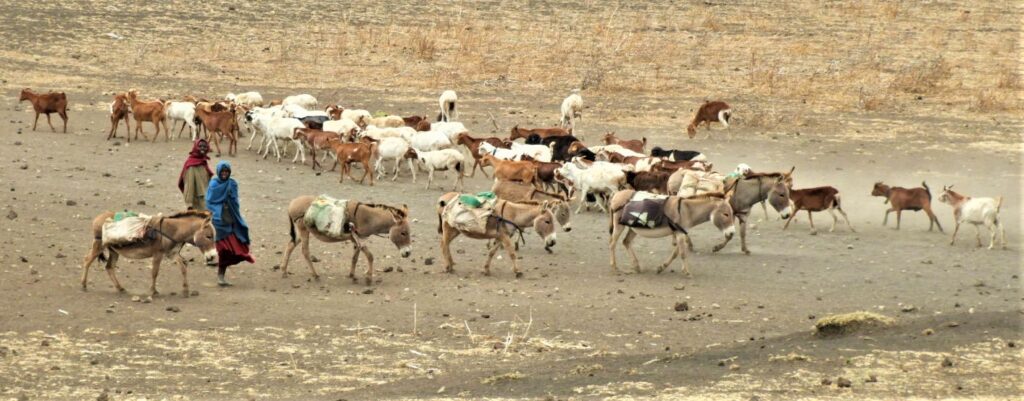
Ngorongoro Conservation Area Authority https://www.ncaa.go.tz/
Mbuzi Mawe Serena Tented Camp https://www.serenahotels.com/mbuzi-mawe
Next Post: Damn! That Traffic Jam
» posted on Thursday, September 22nd, 2022 by Linda Lou Burton
Squiggles On The Map
Linda Lou Burton posting from Ngorongoro Conservation Area, Tanzania– This is about the NCA. Remember that map I bought at the Visitor Center? At the end of that overbooked day when Ben lectured so long we were two hours late getting to the Lodge? Well, truth be told, I didn’t retain much of what he said, but I have since been studying my $6 topographical map. So brace yourself to listen, here are some fascinating facts about “where I am.”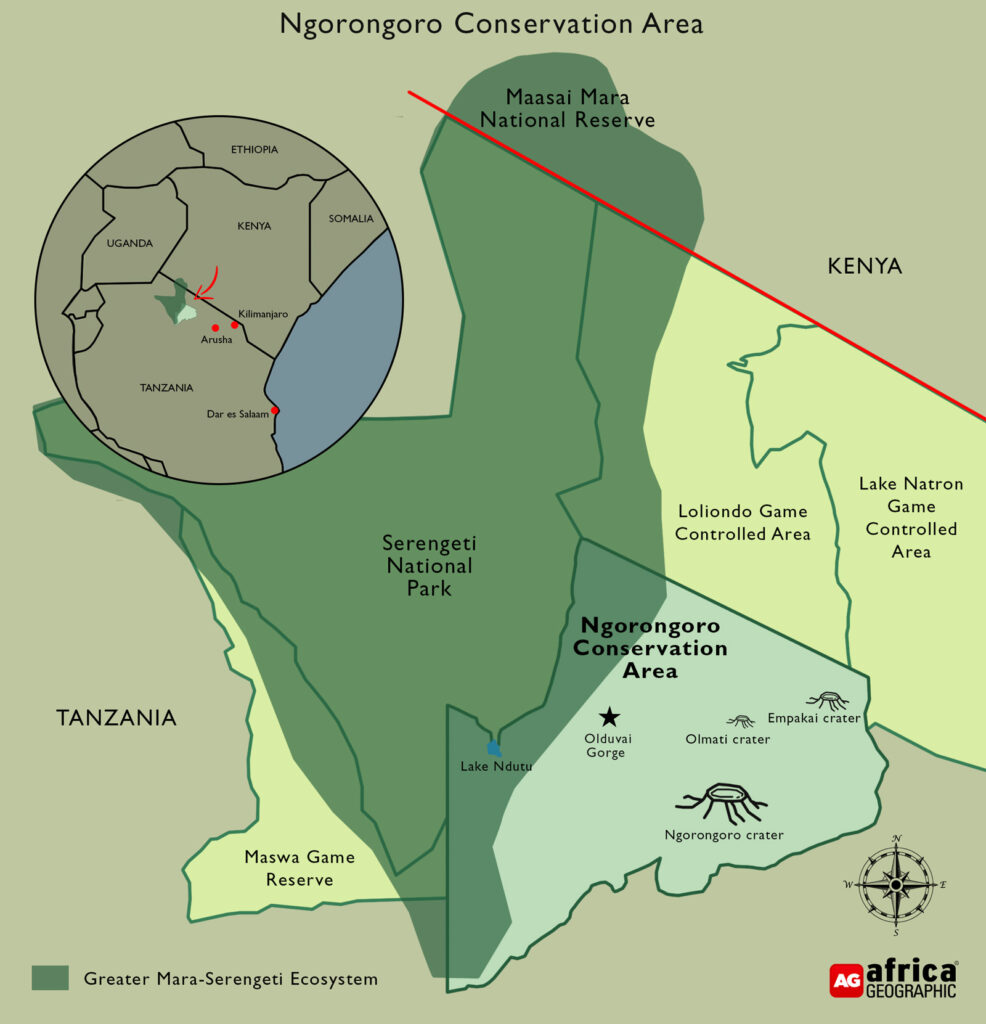
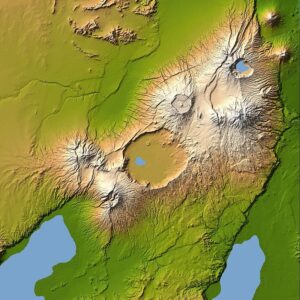 The Ngorongoro Conservation Area (hereafter referred to as NCA) in northern Tanzania was established 63 years ago (1959). It is an extension of the Serengeti (where we’re headed today). Seasonally, up to 2.5 million antelope, zebra, buffalo and wildebeests move around these two areas. The NCA is a UNESCO Mixed World Heritage Site and an International Man and Biosphere Reserve, and is often referred to as the 8th Wonder of the World.
The Ngorongoro Conservation Area (hereafter referred to as NCA) in northern Tanzania was established 63 years ago (1959). It is an extension of the Serengeti (where we’re headed today). Seasonally, up to 2.5 million antelope, zebra, buffalo and wildebeests move around these two areas. The NCA is a UNESCO Mixed World Heritage Site and an International Man and Biosphere Reserve, and is often referred to as the 8th Wonder of the World.
Size: NCA covers over 3,200 square miles of Africa’s wildlife, people, and archaeological sites. The heart of the NCA, the Ngorongoro Crater, with an area of 100 square miles and walls rising to a height of 2,000 feet, is the world’s largest intact volcanic caldera.
Wildlife: NCA, together with Serengeti National Park and other areas supporting the Serengeti ecosystem, supports the greatest concentration of wildlife on Earth. From June through October, the Serengeti Plains are dry, bare and dusty. From November through May, the rainy season, they turn lush green and millions of animals flood this rich pasture.
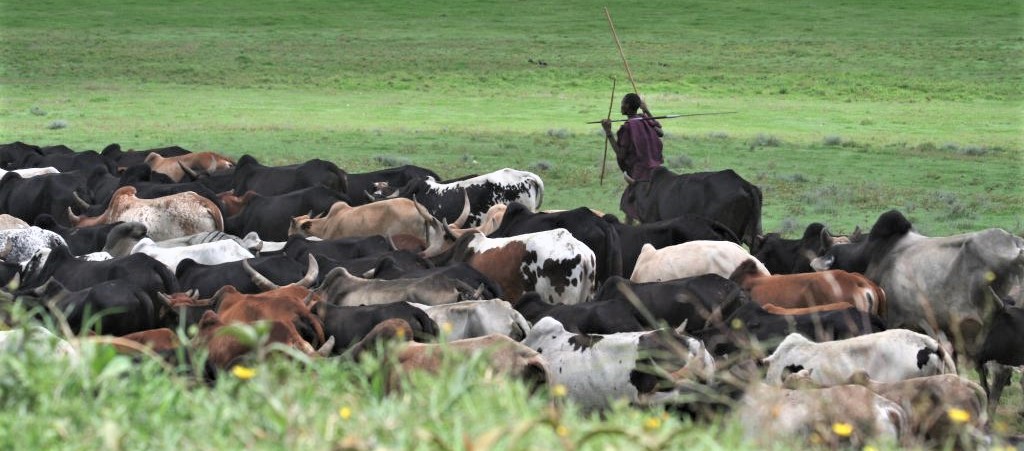 People: Over the past few thousand years, a succession of cattle-herding people colonized this area from the North. The Maasai arrived about 300 years ago from Ethiopia, coming down the Nile River. Today, approximately 64,000 Maasai pastoralists live in the area with their cattle, donkeys, goats and sheep.
People: Over the past few thousand years, a succession of cattle-herding people colonized this area from the North. The Maasai arrived about 300 years ago from Ethiopia, coming down the Nile River. Today, approximately 64,000 Maasai pastoralists live in the area with their cattle, donkeys, goats and sheep.
 Activities in the Area: Walking, camping, and game viewing safaris. Cultural tourism experiences among Maasai and Hadzabe tribes. Visits to archaeological findings at Olduvai Gorge.
Activities in the Area: Walking, camping, and game viewing safaris. Cultural tourism experiences among Maasai and Hadzabe tribes. Visits to archaeological findings at Olduvai Gorge.
 Olduvai Gorge (Oldupai = Maasai spelling) is the historic place where Mary and Louis Leakey unearthed a jawbone in 1959, which pushed back the beginning of human evolution well past the 1.5 million year mark. The different kinds of hominids found here show a gradual increase in brain size and in the complexity of their stone tools. The Oldupai Museum is open daily at the Gorge, where visitors can learn more details of this fascinating story.
Olduvai Gorge (Oldupai = Maasai spelling) is the historic place where Mary and Louis Leakey unearthed a jawbone in 1959, which pushed back the beginning of human evolution well past the 1.5 million year mark. The different kinds of hominids found here show a gradual increase in brain size and in the complexity of their stone tools. The Oldupai Museum is open daily at the Gorge, where visitors can learn more details of this fascinating story.
 We pass through Olduvai Gorge on our way to Mbuzi Mawe Serena Tented Camp today, but with an 80+ -mile-drive on rutted dirt roads ahead, I’m guessing we won’t stop at the Museum. I’m listing interesting sites I see on the NCA map; you can check Google maps too. We have to travel along the Crater’s rim before beginning our descent; we’ll pass the Senato Gate which controls the Senato Descent Road into the Crater (Rick doesn’t remember if that’s the one they took). We’ll pass by Loonguku and Kiloko Cultural Bomas, all in the Oldupai Gorge; we’ll pass the road leading to Oldupai Museum, the Leakey Camp Research Station, Archeological Excavations, and Archeological Camp near Naiprosuet Hill. Then we enter the Serengeti Plain and Serengeti National Park. At the moment, all of this is just squiggles on a map. By tonight, they’ll be places I’ve been. Or at least, passed by.
We pass through Olduvai Gorge on our way to Mbuzi Mawe Serena Tented Camp today, but with an 80+ -mile-drive on rutted dirt roads ahead, I’m guessing we won’t stop at the Museum. I’m listing interesting sites I see on the NCA map; you can check Google maps too. We have to travel along the Crater’s rim before beginning our descent; we’ll pass the Senato Gate which controls the Senato Descent Road into the Crater (Rick doesn’t remember if that’s the one they took). We’ll pass by Loonguku and Kiloko Cultural Bomas, all in the Oldupai Gorge; we’ll pass the road leading to Oldupai Museum, the Leakey Camp Research Station, Archeological Excavations, and Archeological Camp near Naiprosuet Hill. Then we enter the Serengeti Plain and Serengeti National Park. At the moment, all of this is just squiggles on a map. By tonight, they’ll be places I’ve been. Or at least, passed by.
Alphabetical Listing of More NCA Things To See
- Empakaai Crater: Tiny crater, 2 square miles, lake and forest, great views over the Rift Valley and the cone of Oldonyo Lengai.
- Lerai Forest: Small forest of yellow barked acacia trees on the Ngorongoro Crater floor.
- Nasera Rock: Huge monolith 328 feet high in the Goi Mountains.
- Oldonyo Lengai: Still active volcano; climb the steep slopes to see the steaming, bubbling activity.
- Olkarien Gorge: Narrow Gorge in the Goi Mountains; during the rains, Maasai bring cattle here to drink.
- Olmoti Crater: Shallow grassy crater and source of the Munge River which pours through a notch in a spectacular waterfall on the rim of the Ngorongoro Crater.
- Shifting Sands: A little black sand dune marches across the plains, covering 56 feet a year; blown by a strong, steady wind, it maintains its size and elegant shape.
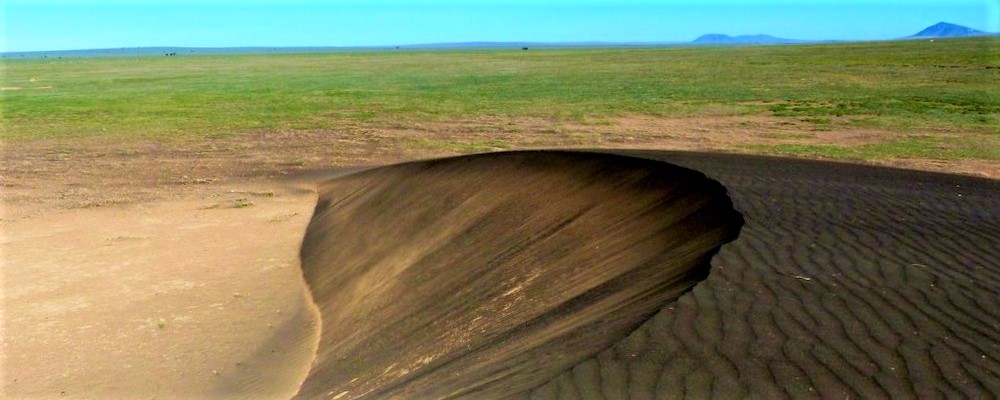
Ngorongoro Conservation Area Authority https://www.ncaa.go.tz/
Mbuzi Mawe Serena Tented Camp https://www.serenahotels.com/mbuzi-mawe
Next Post: Famous Restrooms
» posted on Thursday, September 22nd, 2022 by Linda Lou Burton
It’s Worth It!
Linda Lou Burton posting from Ngorongoro Serena Safari Lodge, Ngorongoro Crater, Tanzania– Gray. A soft, silent gray. That’s the first thing I saw when I opened my eyes. A misty fog came all the way to our balcony this morning. Unlike yesterday’s brilliant pink and 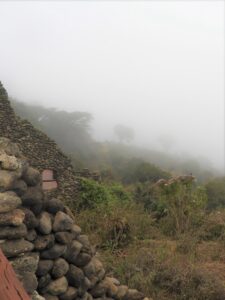 orange highlighting that hundred-mile view across the Crater, today’s fog encased our balcony like a cuddle blanket. A lot of poems have been written about fog. Some complain that fog is an obstacle, blocking out what you want to see; others consider it a relief, a kind of protection from things you don’t want to deal with. For me this morning, it was the latter. I was not in the mood for another “luggage out for pickup before dawn then haul ass into the 4×4 for a 4-hour bumpy ride across a dusty plain” kind of day. It wasn’t that I didn’t want to see the Serengeti (one of the most famous National Parks in the world); it was more that I wanted, needed, to stay longer where I was. I wasn’t DONE with the Crater. Or the Lodge.
orange highlighting that hundred-mile view across the Crater, today’s fog encased our balcony like a cuddle blanket. A lot of poems have been written about fog. Some complain that fog is an obstacle, blocking out what you want to see; others consider it a relief, a kind of protection from things you don’t want to deal with. For me this morning, it was the latter. I was not in the mood for another “luggage out for pickup before dawn then haul ass into the 4×4 for a 4-hour bumpy ride across a dusty plain” kind of day. It wasn’t that I didn’t want to see the Serengeti (one of the most famous National Parks in the world); it was more that I wanted, needed, to stay longer where I was. I wasn’t DONE with the Crater. Or the Lodge.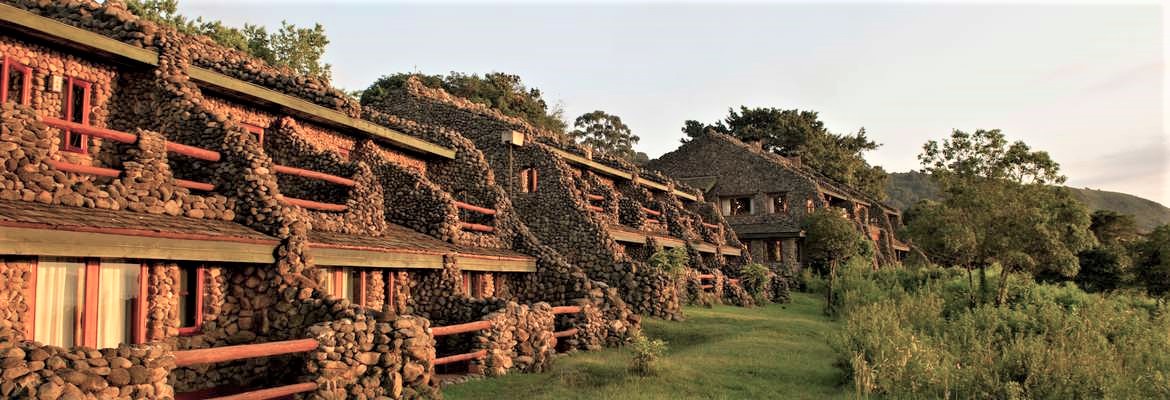
Despite the irritations of our specific tour’s missed deadlines and wanky upside down schedules that drained everyone’s strength and patience, none of that is a reflection on the facilities and services offered by the Lodge. The building is old and definitely not easy for those with walking difficulties to get around in; and its remote location makes it extremely difficult to get TO, but, I promise, it is so worth it! This is what they say about themselves:  The Ngorongoro Crater, a UNESCO World Heritage destination referred to as the Eighth Wonder of the World, is a location unlike any other in Tanzania and perhaps the world. Ngorongoro Serena Safari Lodge is an enchanting river-stone lodge seemingly fastened to the Crater rim by native vines, offering breathtaking views in every direction. With a
The Ngorongoro Crater, a UNESCO World Heritage destination referred to as the Eighth Wonder of the World, is a location unlike any other in Tanzania and perhaps the world. Ngorongoro Serena Safari Lodge is an enchanting river-stone lodge seemingly fastened to the Crater rim by native vines, offering breathtaking views in every direction. With a 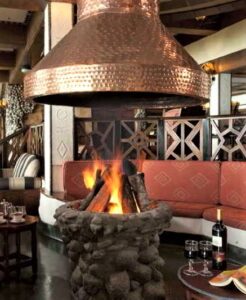 mesmerizing expanse of plains, forests and lakes extending as far as the eye can see, the Lodge is surrounded by prehistoric stillness and landscapes. Arched stone passages and timbered decks, walls adorned with cave paintings and lit by flickering torches, and an eternally lit fireplace offer an incredible backdrop for your stay in Tanzania. From English breakfasts and sundowner cocktails at the Crater’s edge to game drives across the Crater floor and evening receptions with authentic Maasai music and dance performances, your stay will be distinguished by unforgettable moments.
mesmerizing expanse of plains, forests and lakes extending as far as the eye can see, the Lodge is surrounded by prehistoric stillness and landscapes. Arched stone passages and timbered decks, walls adorned with cave paintings and lit by flickering torches, and an eternally lit fireplace offer an incredible backdrop for your stay in Tanzania. From English breakfasts and sundowner cocktails at the Crater’s edge to game drives across the Crater floor and evening receptions with authentic Maasai music and dance performances, your stay will be distinguished by unforgettable moments.
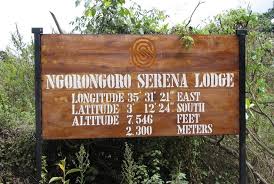 Is that an exaggeration? I’d have to say NO, it’s not! So I need another week to mess around here, to sit on my balcony and just breathe; to have lunch and an all-day game drive in the Crater (maybe twice); to take a slow-morning nature walk around the grounds and rim; to watch the Maasai herding their cattle down the steep Crater walls; and to study the geology of this unusual part of the world. The Olduvai Gorge for one; one of the most important paleoanthropological localities in the world. Maybe I can just hide in the fog today, and they won’t miss me?
Is that an exaggeration? I’d have to say NO, it’s not! So I need another week to mess around here, to sit on my balcony and just breathe; to have lunch and an all-day game drive in the Crater (maybe twice); to take a slow-morning nature walk around the grounds and rim; to watch the Maasai herding their cattle down the steep Crater walls; and to study the geology of this unusual part of the world. The Olduvai Gorge for one; one of the most important paleoanthropological localities in the world. Maybe I can just hide in the fog today, and they won’t miss me?
Ngorongoro Serena Safari Lodge https://www.serenahotels.com/ngorongoro/accommodation
Next Post: Squiggles On The Map

